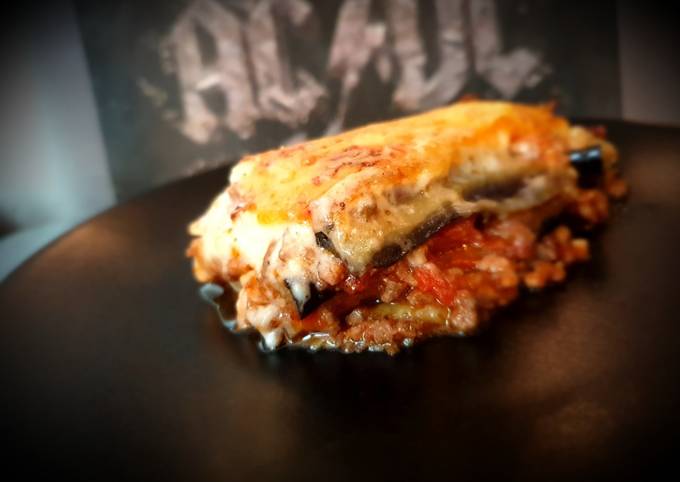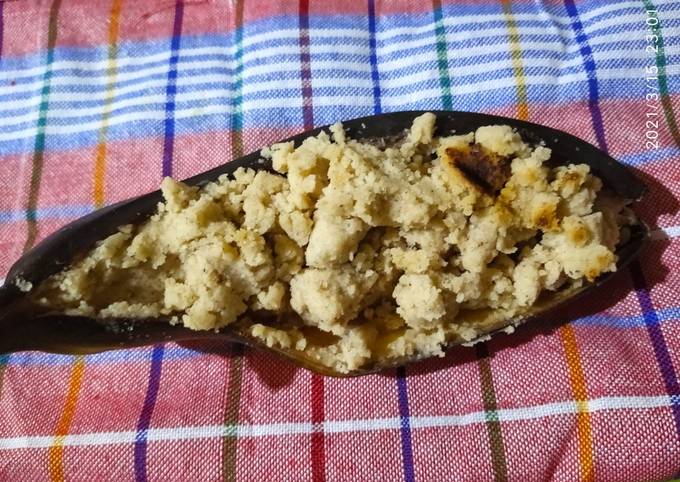
Hey everyone, hope you are having an amazing day today. Today, I will show you a way to prepare a distinctive dish, moussaka. It is one of my favorites. For mine, I will make it a little bit unique. This will be really delicious.
Moussaka is one of the most favored of recent trending foods on earth. It’s simple, it’s fast, it tastes yummy. It is enjoyed by millions daily. Moussaka is something that I’ve loved my entire life. They’re fine and they look fantastic.
Moussaka is an eggplant- and/or potato-based dish, often including ground meat, which is common in the Balkans and the Middle East, with many local and regional variations. Moussaka is to the Greek what Lasagna is to Italians. A rich tomato meat sauce layered with eggplant instead of pasta sheets, and topped with a thick layer of béchamel sauce, this traditional Greek recipe.
Easiest Way to Make Moussaka
To get started with this recipe, we have to first prepare a few ingredients. You can have moussaka using 15 ingredients and 9 steps. Here is how you cook it.
Ingredients
The ingredients needed to make Moussaka:
- Get 25 g beurre
- Make ready 25 cl lait
- Make ready 25 g farine
- Make ready 40 g d'emmental râpé
- Get 300 g épaule d'agneau hachée (ou boeuf)
- Get 5 cl vin blanc
- Take 1 à 2 aubergines
- Make ready 1/2 oignon
- Get 3 tomates
- Get 1 gousse d'ail
- Make ready huile d'olive
- Take persil
- Get sel
- Take poivre
- Take pignons de pin (optionnel)
This moussaka is mostly authentic with a couple of twists for added flavor. Traditional moussaka uses ground lamb while most modern versions use ground beef. I took culinary license to add the additional. This delicious lamb moussaka recipe from the Hairy Bikers provides a wonderful meal for a family occasion.
Instructions
Steps to make Moussaka:
- Monder, épépiner et concasser les tomates. Hacher l'oignon, l'ail et le persil. Réserver.
- Ôter le pédoncule des aubergines et les couper en lamelles de 1 cm dans le sens de la longueur.
- Préchauffer le four à 180°C.
- Placer les tranches d'aubergine sur une plaque avec du papier cuisson (ou un tapis). Badigeonner d'huile d'olive et enfourner pour 10 minutes. Au bout des 10 min, retourner les tranches et remettre au four pour 10 minutes de plus. Une fois cuites, réserver.
- Pendant ce temps, faire colorer la viande dans une poêle avec un peu d'huile d'olive, du sel et les oignons. Déglacer au vin blanc puis laisser réduire. Ajouter ensuite l'ail, le persil et les tomates. Faire mijoter sur feu moyen et à couvert pendant environ 30 minutes.
- Lorsqu'il reste environ 10 minutes de cuisson à la viande, réaliser la béchamel.
- Dans une petite casserole, faire fondre le beurre puis ajouter la farine en une fois. Mélanger pour obtenir un roux. Ajouter ensuite le lait puis faire épaissir la préparation sur feu moyen en remuant pour enlever les grumeaux. Assaisonner avec sel, poivre et éventuellement un peu de muscade.
- Pour le montage : tapisser le fond d'un plat avec la moitié des tranches d'aubergine. Ajouter par dessus la moitié de la viande. Répéter l'opération. Disposer quelques pignons de pin. Finir par la couche de béchamel.
- Parsemer le tout avec l'emmental râpé et enfourner pour 30 minutes, toujours à 180°C.
Make our easy moussaka for an instant crowd pleaser. This classic Greek dish of layered thinly sliced potato, aubergine and lamb is topped with a creamy béchamel sauce. Moussaka is traditionally made with lamb, but I often use ground beef instead. The recipe looks a bit daunting, but if you prepare one step while working on another, it will save time. Moussaka is a classic Greek casserole.
As simple as that How to Prepare Moussaka
So that’s going to wrap this up with this special food moussaka recipe. Thank you very much for reading. I’m confident you can make this at home. There is gonna be more interesting food at home recipes coming up. Remember to bookmark this page in your browser, and share it to your loved ones, colleague and friends. Thanks again for reading. Go on get cooking!
Print this page

